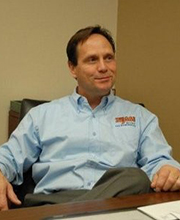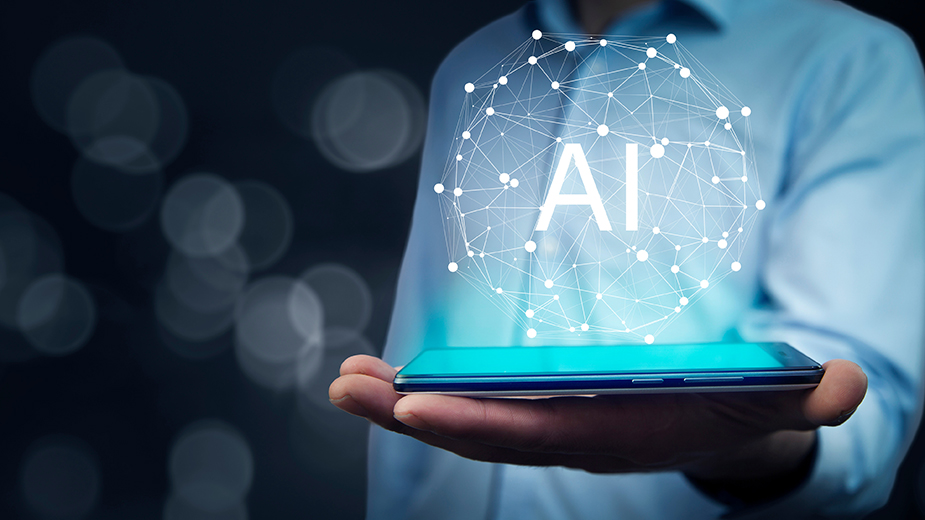YOUNGSTOWN, Ohio – Artificial Intelligence conjures both excitement and dread, but how it will change business technology remains an evolving question.

“AI is pretty much ever-present in our thinking these days, of what it can do for us and how we can take advantage of it,” says David Daichendt, vice president of operations at infinIT in Warren. “But we’re just at the beginning stage of realizing how it can benefit us.”
From automation to decision making, Tom Reeveley, president of Team Office in Austintown, believes this is just the beginning of the biggest transformation in technology we will see in the foreseeable future. Companies and individuals already are using forms of AI in voice digital assistance, map programs with traffic patterns in real time and in industries from health care to manufacturing, Reeveley says.

“What we’re seeing with our clients is that they want a seamless experience. They want everything to work together, seamlessly,” says Reeveley, adding people want to work in the office, in their car and at home. “Over the last several years we’ve seen a lot more continuity in technologies. Technologies have become more advanced, more streamlined and essentially more transparent. Technologies work better together than they ever have.”
Bill Hancher, manager of Doing Better Business Inc., says AI is in many of the software products and solutions his company sells. For instance, document management solutions use AI to better control and utilize documents. Beyond just ocular character recognition and without the assistance required in the past, Hancher says AI can now learn by repetition what a document is, classify it and create a way to index it automatically.
Experts agree AI will provide some big advantages for those looking to process large amounts of data faster, giving them the freedom to do it faster and with less money.

“It’s historically been very expensive and complicated to analyze data and that kind of analysis, predictive or otherwise, has always been left to the largest companies,” says Robert Merva, owner and CEO of Avrem Technologies in Canfield. Now technology is bringing down the price, making it easier for smaller companies to implement data analysis he says.
Daichendt points out that a small restaurant would be able to gauge traffic trends and make decisions on supply ordering and the number of employees needed for a particular time of day.
“AI is going to provide general businesses data mining,” he says. “Instead of having to go through spreadsheets and reams of data and databases, you will simply be able to ask a question and AI will sort through all of your available data sources and give you the answer.”
Justin White, co-owner and CEO of Advanced Technology Partners in Austintown, says it’s important to ask AI the right questions in order to garner the information you are seeking.

“You can’t just broadly ask AI a question and expect it to interpret things from emotion or facial expression,” White says. “The way we interact with AI is going to be more challenging than interacting with a human being.”
For example, there are concerns with bots and some AI programs that search the Internet for proprietary information that a business does not want out in the public.
With some AI products, you don’t know where your data is going, White says. For that reason, he is a big fan of Microsoft Copilot, a recent launch that allows businesses to use AI in conjunction with their Microsoft 365 products. White says he visited the company headquarters in Atlanta around the time of the launch and was impressed by the scope of the investment and the commitment.
“They focus on what they call ethical AI, understanding the importance of security and data leakage. They don’t want data you imput into their product in the wrong hands, which could easily happen in some of these free, mass-produced versions,” White says.
Microsoft Copilot programs can provide a summary of a meeting recorded in Microsoft Teams, build diagrams with data in Microsoft Excel and better manage vast amounts of emails in Microsoft Outlook.
“I’m not sure it’s a mature enough product for everyone to be ready to adapt it,” White says. “But I do think that in the long term, this product will work out the kinks and become a very important product day-to-day.”

AI is also helping with cybersecurity issues. With AI security programs, Hancher says instead of looking for the telltale virus signatures of the past, AI can spot programs attempting to do nefarious things in the background.
“We have the ability through AI to respond to threats in real time,” says Jason Wurst, vice president of Tele-Solutions Inc. “So there are some benefits to AI that we’re already utilizing. All of our customers are already on next generation antivirus. It’s scary, but we’re using it for good, too.”
Will AI enable security experts to react instantaneously as bad actors develop new ways to use AI for their illegal purposes?
Daichendt cannot say just yet, but notes that the promise for such speedy reaction is there.
Still, some see AI as the Wild West, full of lurking dangers.
“There is a whole new threat landscape out there with AI – the ability to fake things that seem legitimate, whether that be content or social engineering kinds of things,” Wurst says.

Additionally, Hancher points out there are always concerns about plagiarizing content when using programs such as Chat GPT.
“We have a policy in place that our company… I wouldn’t say restricts the use of AI, but controls the use of AI,” Hancher says.
And with new programs exposing businesses to new threats, Merva says it is even more important to take IT seriously.
“There is no such thing as ‘I don’t have anything worth stealing.’ So even the smallest companies need to devote a little time and resources to something like this,” Merva says.
Wurst agrees, noting the workplace has evolved to hybrid environments, cloud-based systems and the need for a recovery plan in the event of disaster.
“There’s a little bit of a talent gap trying to go from our traditional work environment to where we are now. If you’re an internal guy trying to handle it all by yourself, it can be a lot,” says Wurst.
